For such a small country, there is a lot to offer when it comes to Costa Rica scuba diving. With both Caribbean and Pacific Ocean waters, you can find a huge variety of diving conditions and underwater life.
*This post may contain affiliate links, as a result, we may receive a small commission (at no extra cost to you) on any bookings/purchases you make through the links in this post. As an Amazon Associate, we earn from qualifying purchases. Read our full disclosure
With a name meaning “rich coast,” it’s no wonder that Costa Rica diving is a can’t miss experience. The best scuba diving in Costa Rica is, of course, a matter of personal preference, but rest assured there is something for everyone here!
Costa Rica Dive: Caribbean vs Pacific
The Caribbean coast features stunning coral reefs overflowing with life. The biodiversity here is remarkable and you’re likely to see hundreds of different species of marine animals on any given dive. Also, these reefs are often in warmer, more protected waters making for less challenging diving than the Pacific side.
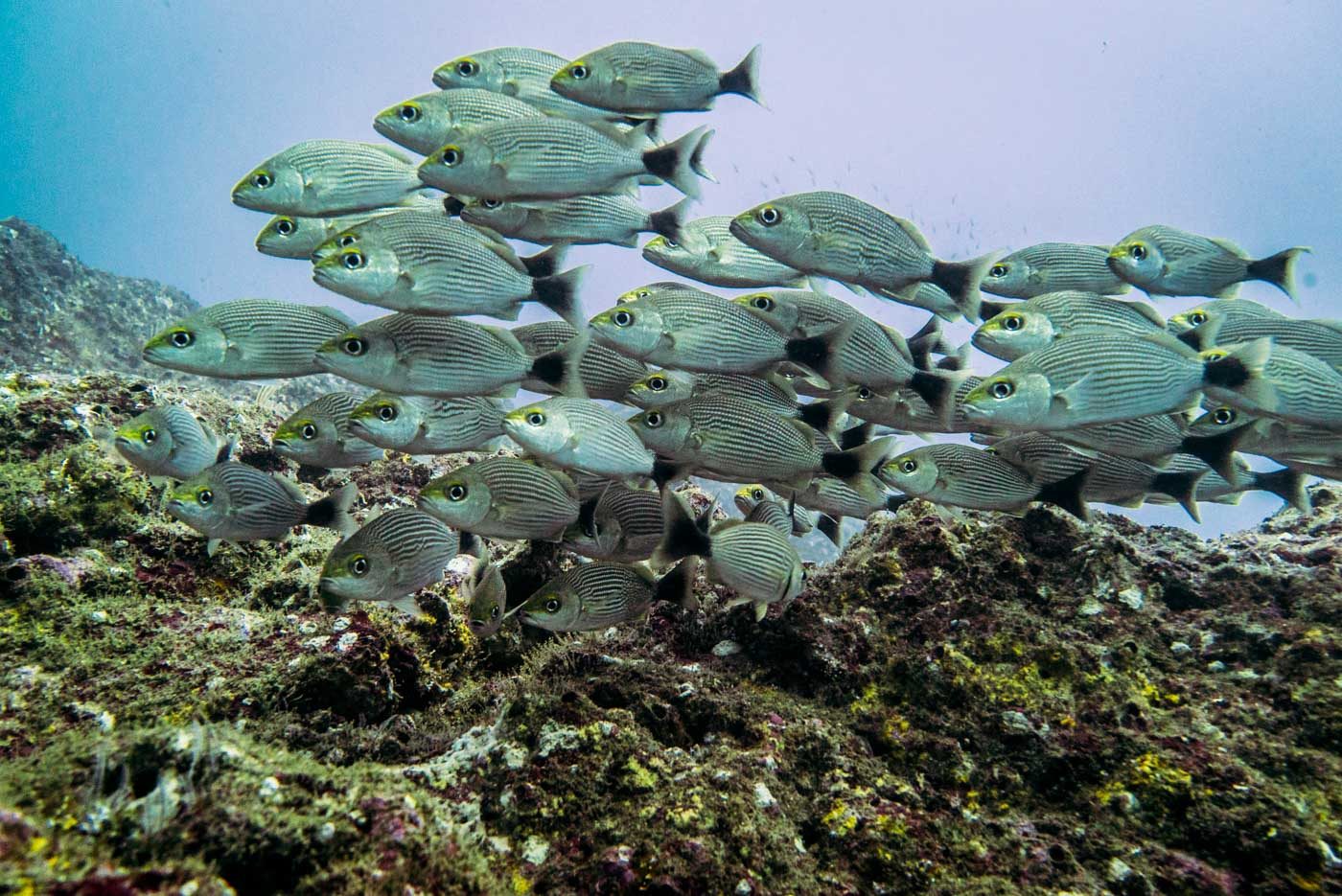
Traveling Soon? Here is a list of our favourite travel providers and accessories to help get you ready for your upcoming trip!
The Pacific Ocean side is home to whales, rays, and other incredible sea life in these colder and deeper waters. The south half of the coastline is a protected nature reserve, making it an ideal diving location.
There is less vegetation in these waters, with a rocky and barren underwater landscape and oftentimes strong currents. This doesn’t limit life here. However, and you’re practically guaranteed to see large schools of fish on every dive. Also, Shark diving in Costa Rica is best on this side of the country, and it plays host to a very famous shark migration.
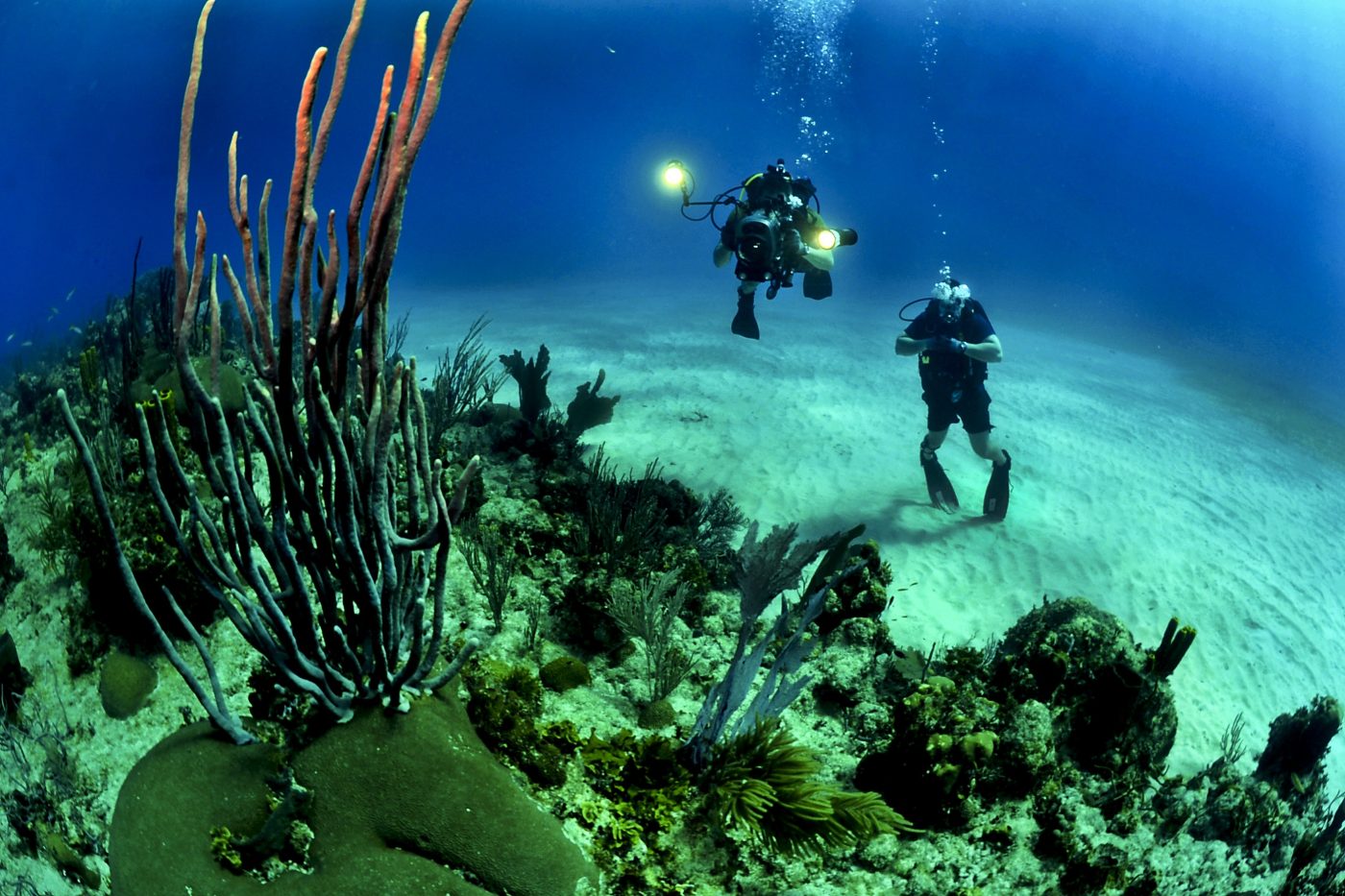
The Best Time to Scuba Dive in Costa Rica
While the best dive in Costa Rica depends on your location and personal preference, it also depends on the time of year. There are a number of factors that change from season to season including rainfall, currents, sea life, and underwater visibility.
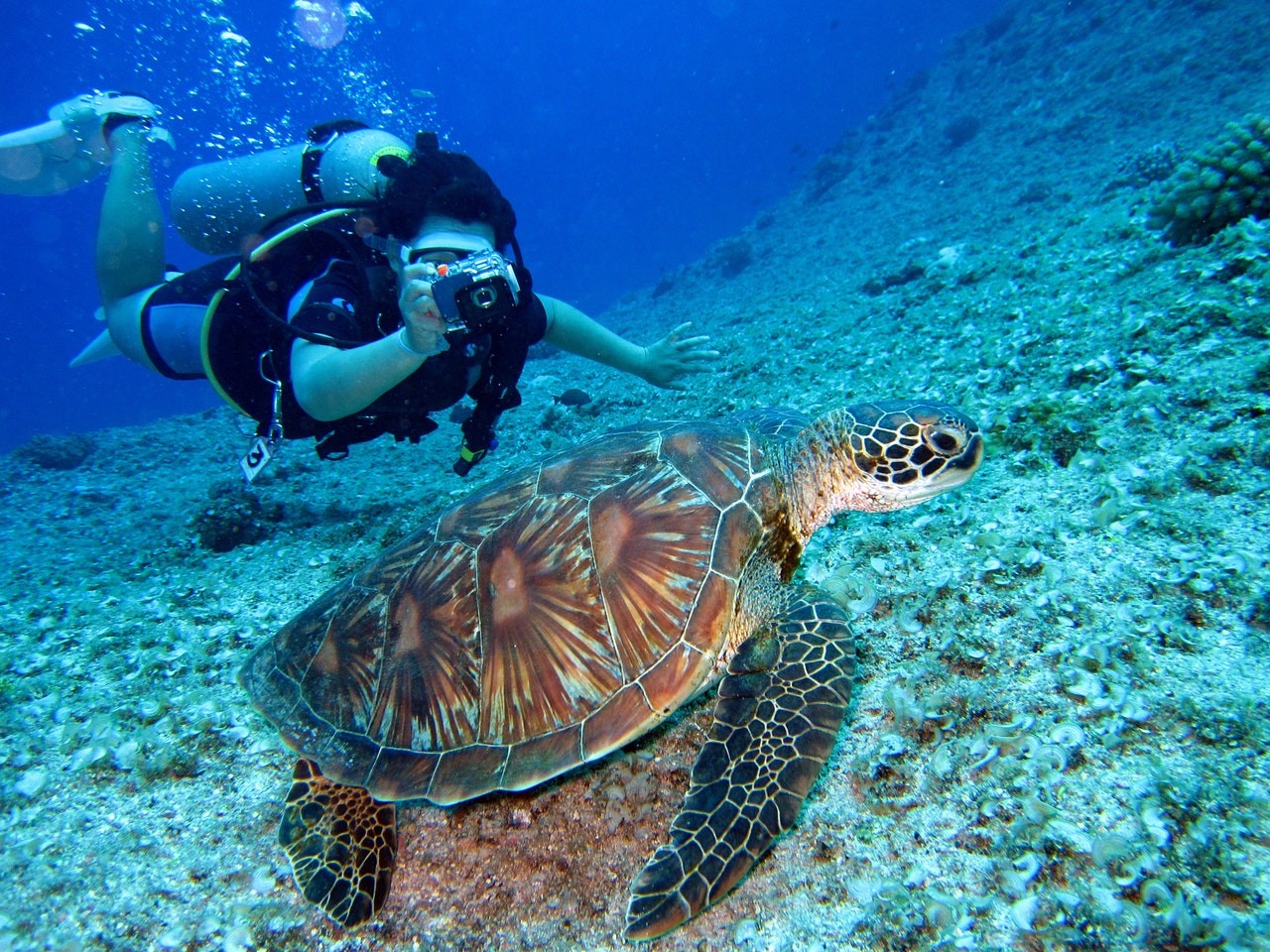
The Dry Season
The dry season in Costa Rica is from December to May and normally sees a calmer ocean. Visibility is often higher during this time, reaching up to 30 m. These factors make it the best choice for beginner divers who have less experience or confidence in the open ocean.
During the dry season, marine animals from deeper waters generally stay away from the coasts. Instead, you’re more likely to see fish and other creatures that are native to the shallower waters. In general, this is the best time to dive on the Pacific coast in terms of conditions.
The Green Season
The green season, or rainy season, in Costa Rica lasts from May to November. During this time, you can expect at least some rainfall every day. This time of year is a better choice for more experienced divers who are comfortable in stronger currents and are interested in swimming with larger animals.
In this season, there are much higher chances of seeing whales and sharks on your dive. However, visibility is often lower as the strong ocean currents stir up plankton and debris from the ocean floor.

The Best Diving in Costa Rica
Isla del Cocos (Cocos Island)
When to Go: Year-round, with lots of activity from June-December
Certification Level: Advanced Open Water Certification
Water Temperature: 75-85°F
Depth of Dive Sites: 30-130 ft
Visibility: 40-100 ft
Currents: Very Strong
If you’re a fan of sharks, Cocos Island should be your top choice for Costa Rica scuba diving. Famous for its schools of scalloped hammerheads, hammerhead shark diving in Costa Rica on this uninhabited island is considered some of the best in the world.
The only way to go about diving Cocos Island is to book a trip on a liveaboard boat leaving from mainland Costa Rica. Normally the trips last anywhere from a week to 10 days. This includes over 2 full days of travel time to get there and back, as the island is quite far out in the ocean.
Once there, you’ll dive at 20 different dive sites around the island. The most popular dive sites are Bajo Alcyone, Dirty Rock, Dos Amigos Grande, and Dos Amigos Pequena. The area is a UNESCO World Heritage Site, creating a safe haven for endless marine life.

While diving, you’ll have the opportunity for heartstopping sightings of hammerhead sharks, along with several other shark species. Look out for Galapagos sharks, silky sharks, silvertips, tiger sharks, and whitetip reef sharks.
Eagle rays, turtles, and dolphins also inhabit the waters year-round and if you’re diving during the rainy season, you’ll have a chance of spotting manta rays and whale sharks too.
Cocos Island is both a tectonic and volcanic island, which explains its mountainous underwater landscape. In fact, there is a famous underwater peak called Everest at 100 m below which can be visited with a submersible. The rugged topography is also what attracts several pelagic species like sharks, tuna, and rays.
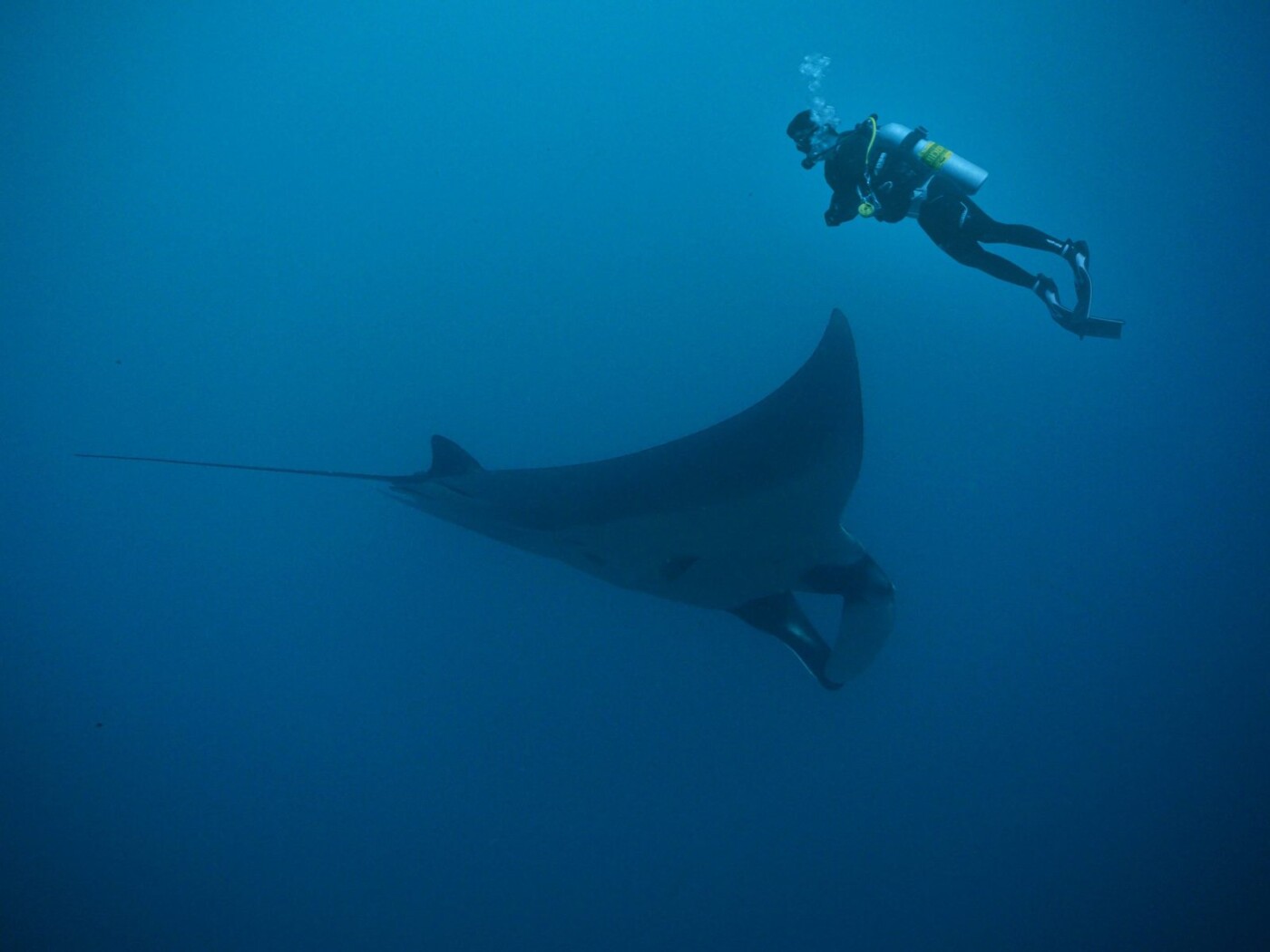
The island receives extremely strong currents and is therefore only recommended for more advanced divers. Even so, this is generally considered the best scuba diving in Costa Rica due to its incredible uniqueness.
Where to Stay for Cocos Island Diving
Since the entire island is considered Cocos Island National Park, there are no accommodations on-site. You’ll need to visit on a scuba diving tour aboard a liveaboard diving vessel which you’ll board in Puntarenas. It’s a 36-hour boat ride to reach the islands so you’ll spend a fair amount of time on the boat.
Caño Island
When to Go: December – May
Certification Level: Open Water Certification
Water Temperature: 70-80°F
Depth of Dive Sites: 30-80 ft
Visibility: 10-90 ft
Currents: Moderate
Caño Island off the coast of the Osa Peninsula is one of Costa Rica’s most exciting and unexplored corners. Caño Island is a protected ecological reserve and its claim to fame is the large population of white tip reef sharks that inhabit the reefs there.
Many people call it the “mini Coco Island” but unlike Cocos Island, Caño Island is well suited to divers of all levels. It’s also one of the few diving destinations in Costa Rica well suited for snorkelling too.

In order to dive at Caño Island, you’ll need to take a boat from the town of Uvita or Drake Bay off the South Pacific Coast. Once within the Cano Island Biological Reserve, descend below the surface for a chance to spot turtles, rays, moray eels, and the occasional dolphin. Sometimes, there are even humpback whales to be seen, migrating through the reserve’s waters.
The marine terrain is a mix of colourful coral reef and rocky landforms including caves, arches, and cliffs. This gives way to several dive sites, including Shark Cave, Devil’s Pinnacle, The Garden, and The Shipwreck.
Where to Stay for Cano Island Diving
The nearest town to Cano Island is Drake Bay, on the Pacific side of the Osa Peninsula. There are a few hotels in the area and several dive shops where you can arrange a tour. If you’re keen to stay in Drake Bay, somewhere like La Paloma Lodge is a good option for its location and tours.
Alternatively, Uvita is another of Cano Island’s dive centers with plenty of tours and accommodation options. We recommend Oxygen Jungle Villas & Spa, which is a stunning oasis in the rainforest.
Papagayo Peninsula
When to Go: June-December
Certification Level: Open Water Certification
Water Temperature: 80-85°F
Depth of Dive Sites: 30-100 ft
Visibility: 10-70 ft
Currents: Strong
Located in the Northwest province of Guanacaste, the Papagayo Peninsula is another great site for Costa Rica scuba diving. Here, you’ll have great opportunities to spot some eels, octopus, rays, and large schools of fish. Many divers visit to see the white tip sharks, grunts, and blue and gold snappers.
There are several different diving sites in the area with short distances between them. This makes exploring the area an easy feat, even with a small boat. Some of the closest to shore are Virador, Monkey Heads, and Meros. Slightly further out but very popular are Punta Argentina, Tortuga, and La Cruz.
The visibility conditions are generally good but can be unpredictable here, so make sure to check the conditions frequently.
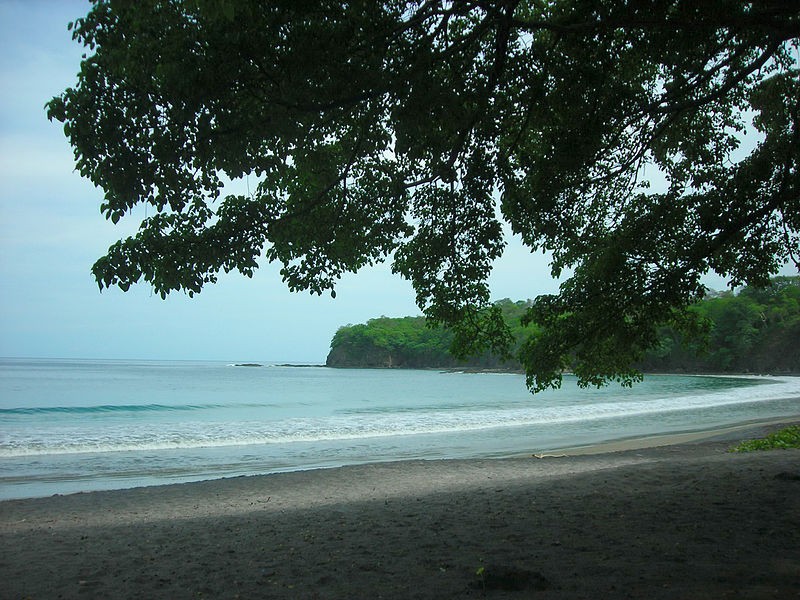
Where to Stay for Papagayo Peninsula Diving
Playas del Coco and Playa Hermosa are two popular launch points for exploring the Papagayo Peninsula and the gulf. There are plenty of accommodation options in the area with dive operators nearby. We recommend Hotel Bosque del Mar, just north of Playa Hermosa, or Villa Del Sol in Coco.
Gulf of Papagayo
The Gulf of Papagayo is the main scuba diving area on the Papagayo Peninsula. Here, you can find both the Catalina Islands and Bat Islands, the two most popular dive sites.
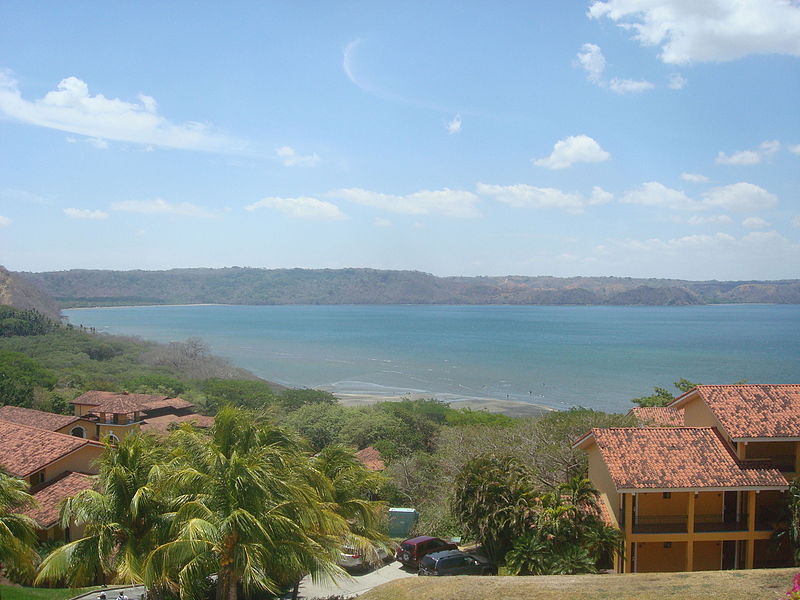
Las Catalinas
When to Go: July-November
Certification Level: Open Water Certification
Water Temperature: 75-85°F
Depth of Dive Sites: 40-120 ft
Visibility: 20-90 ft
Currents: Strong
The Catalina Islands are located about a half-hour offshore from the Papagayo Peninsula and offer a handful of different dive sites.
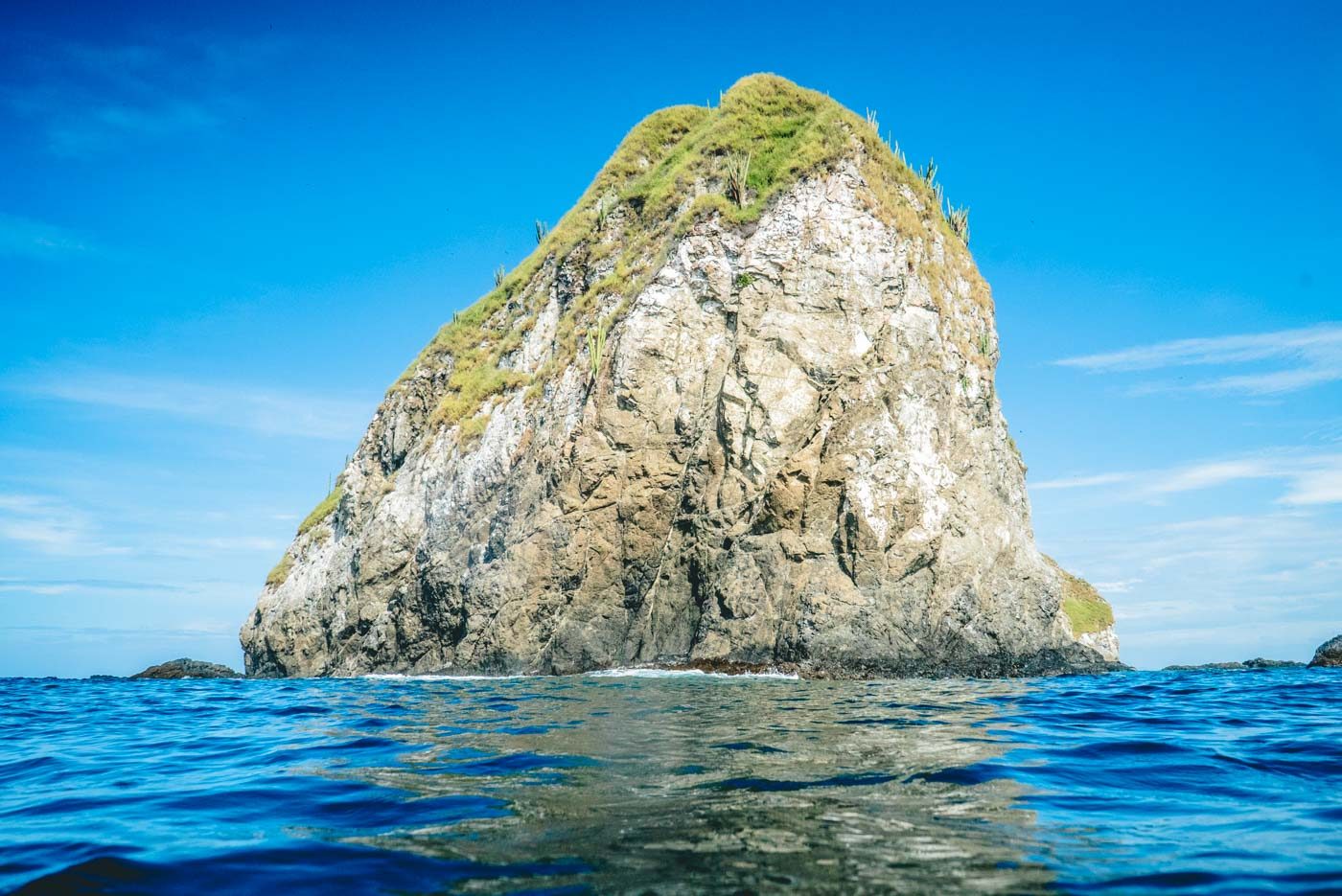
The island chain consists of a series of small rocky islands that are completely uninhabited. Underwater, you’ll find lots of cool rock formations such as caves and arches. The currents here can be strong, so this dive site is not an optimal spot for absolute beginners.
A special resident of the Catalina Islands is the giant Manta Ray. They can grow up to 3,000 lbs and have a wingspan of 23 ft. It’s an incredible sight to see if you’re lucky! You’ll also likely see spotted eagle rays, turtles, dolphins, and moray eels.
Where to Stay for Diving Catalina Islands Costa Rica
Staying anywhere around Playa Grande and Playa Flamingo is a good base for diving the Catalina Islands. Opting for an eco-conscious hotel like Bahia del Sol Hotel is a great option to round out a Catalina dive trip.
Bat Islands
When to Go: March-November
Certification Level: Advanced Open Water
Water Temperature: 75-80°F
Depth of Dive Sites: 60-130 ft
Visibility: 20-90 ft
Currents: Strong
In Murcielagos Bay off the coast of Santa Rosa National Park, you’ll find Islas Murcielagos, or Bat Islands, in English. The island sits inside a marine reserve that is protected by the government and is truly some of the best diving in Costa Rica.
The main highlight of this dive site is the bull sharks that call it home. This is the only place in Costa Rica where you’ll be able to dive with these particular sharks.

Marine biologists are quite active in the area, studying them regularly and learning about their behaviours. Manta rays are another big attraction at Bat Island and, when visibility is good, you can find them in large, graceful schools.
If you’re extra lucky, you might even see some hammerhead sharks there are well. Again, currents here are quite strong so it is not an ideal dive site for beginners.
Where to Stay for Bat Islands Diving
Visitors looking to dive the Bat Islands will usually base themselves in Playas del Coco or Playa Hermosa. The boat ride to Bat Islands is 30 miles from Coco and usually takes about an hour. Staying at either of the hotels mentioned above near the Papagayo Peninsula would make for a good starting point.
Be sure to check out our Guide to Visiting Playa del Coco for more accommodation options and tons of fun activities.
Cahuita National Park
When to Go: March-May, August-November
Certification Level: PADI Scuba Diver
Water Temperature: ~80°F
Depth of Dive Sites: 3-30 ft
Visibility: 20-70 ft
Currents: Mild
Along with the Gandoca Manzanillo Wildlife Refuge, the Southern Caribbean Coast boasts great beginner diving. While it’s not as popular a diving destination as the country’s west coast, it’s home to Costa Rica’s largest coral reef.
These healthy coral reefs are surrounded by hundreds of species of fish and mollusks with over 30 species of coral. It’s best to start at Punta Cahuita (Cahuita Point) and dive into the warm, crystal blue waters.
There are even two shipwrecks to discover not far off of the coast. This is also one of the best places to snorkel in Costa Rica thanks to its convenient location and abundant reefs.
Just down the coast, the Gandoca Manzanillo Wildlife Refuge is another amazing spot for your next dive trip. The area is dotted with small islands, bays, and inlets that attract a ton of marine life. Keep your eyes peeled for dolphins, manatees and sea turtles during nesting season (March-July).
Where to Stay for Caribbean Coast Diving
The main hub of the southern Caribbean coast is Puerto Viejo. It’s conveniently flanked by Cahuita National Park to the north and Gandoca Manzanillo Wildlife Refuge to the south. Puerto Viejo scuba diving outfitters offer tours and equipment rental for a fun diving trip surrounded by tropical fish.
We recommend finding a great ecolodge like Almonds and Corals Lodge in Manzanillo. It’s steps from the beach and actually located within the Gandoca-Manzanillo Wildlife Refuge. Closer to Cahuita is La Shamana Ecolodge, which offers sustainable accommodations in the middle of the jungle.
Diving conditions and what to expect
Costa Rica scuba diving is a great experience to have on your trip. To maximize your diving, make sure to time your visit well.
During the rainy season, visibility can drop considerably, making your dive a lot less enjoyable. However, during the rainy season, the average water temperature is higher than in the dry season.
If you’re diving during the dry season, you might want to consider a thicker wetsuit for better insulation if you are prone to underwater chills. Also, make sure to time your visit based on the marine life you’re hoping to see.
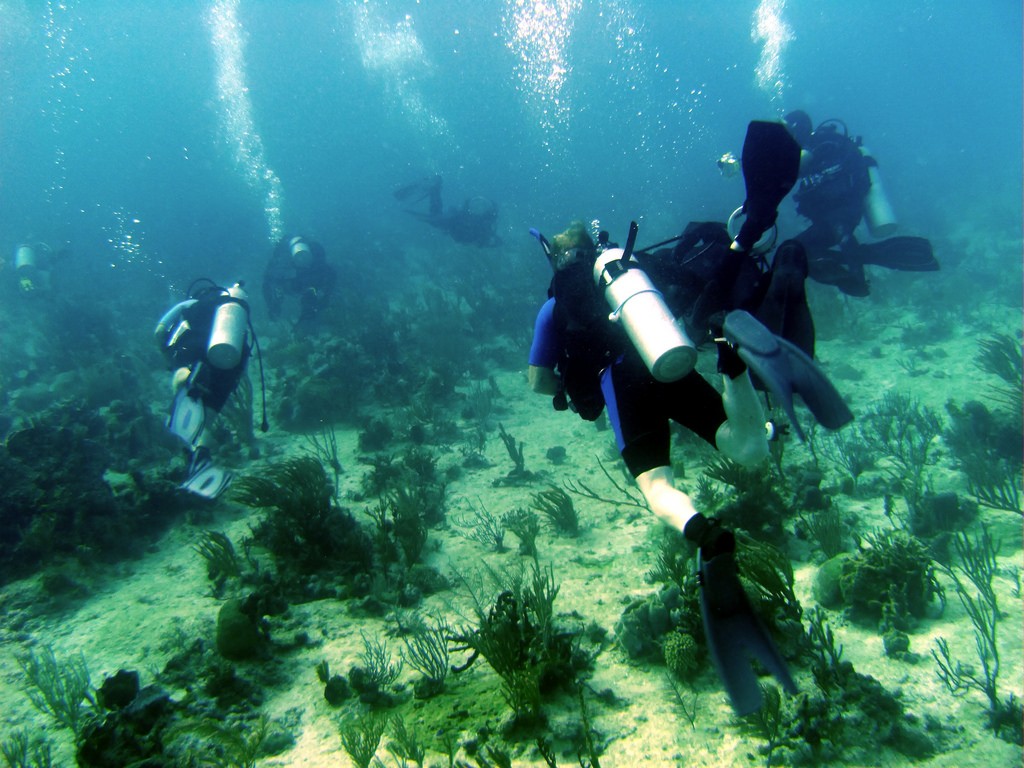
In general, be aware of the currents in Costa Rica as they can be quite strong, especially on the Pacific side. Most Pacific coast dives are recommended for more experienced scuba divers for this reason. If you want to be even more prepared for this kind of diving, consider doing a drift diving course.

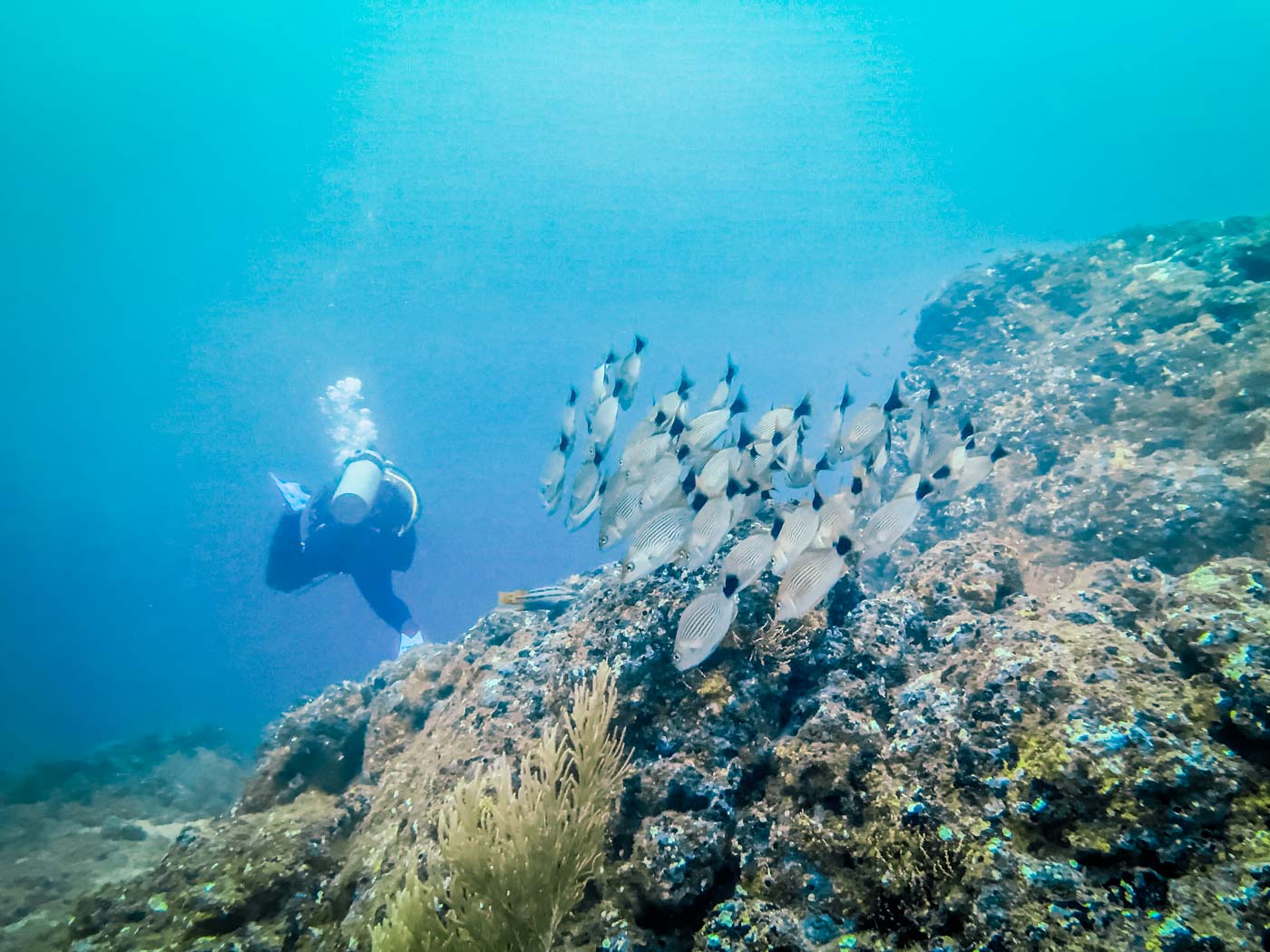

It’s great reading about your guide, very helpful!
Very interesting read & magnificent photos